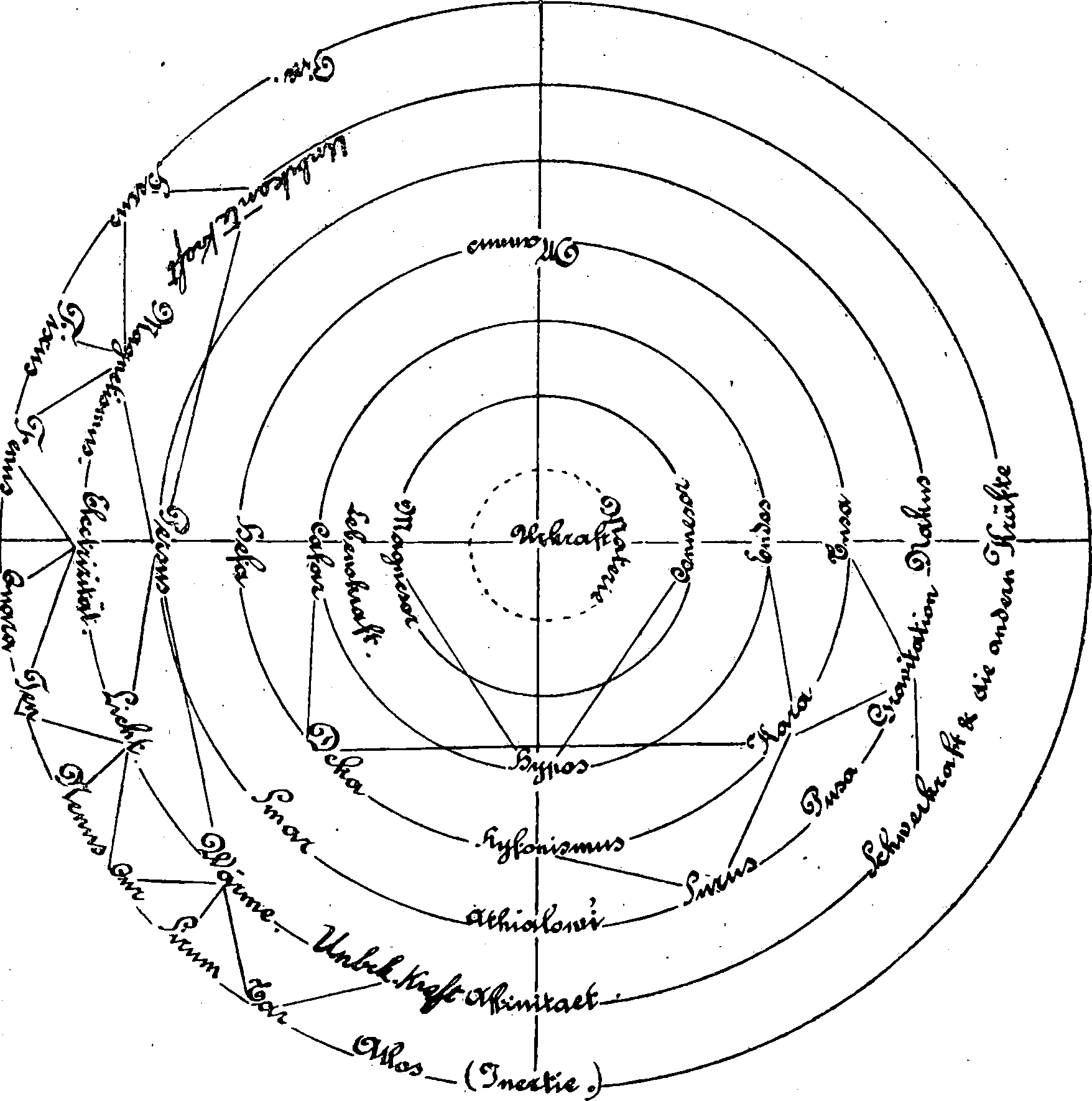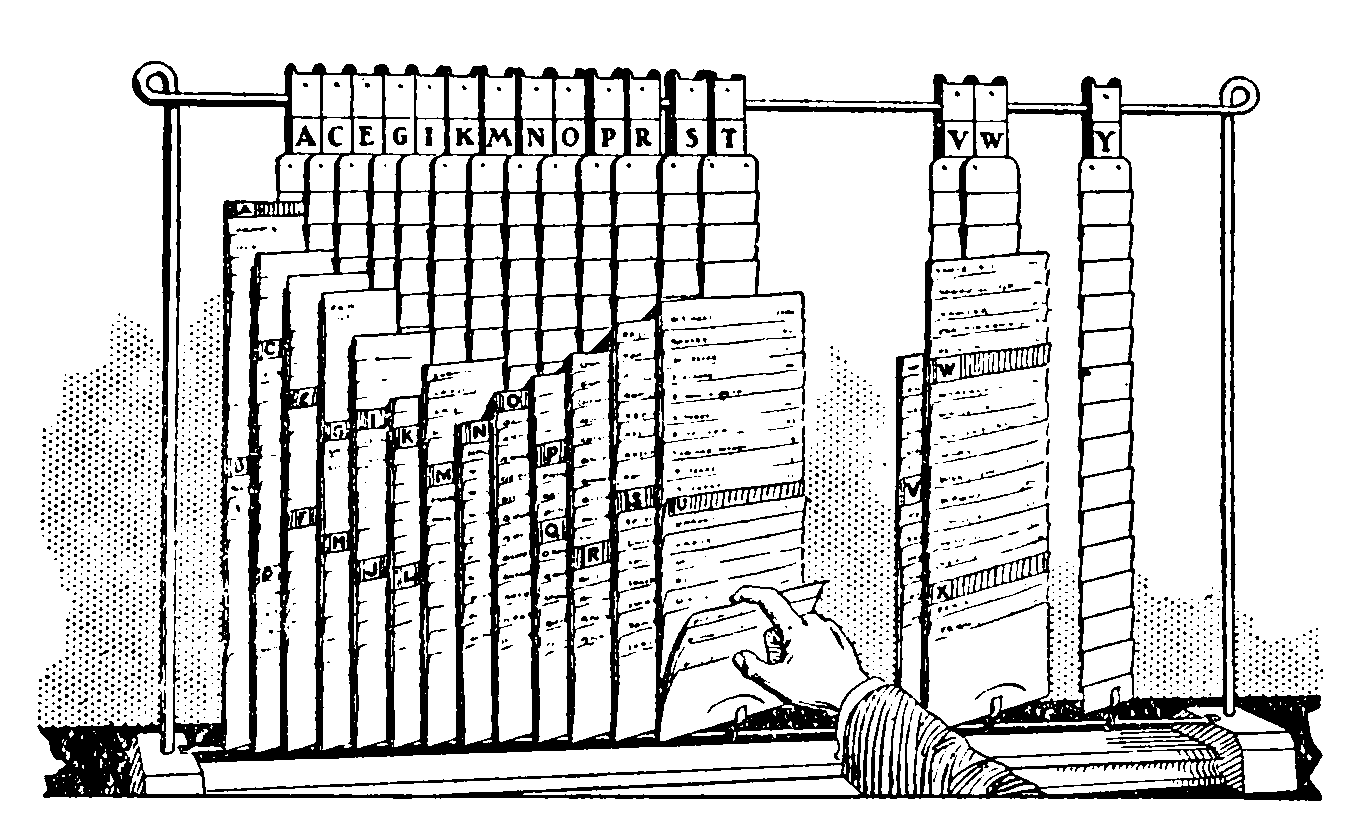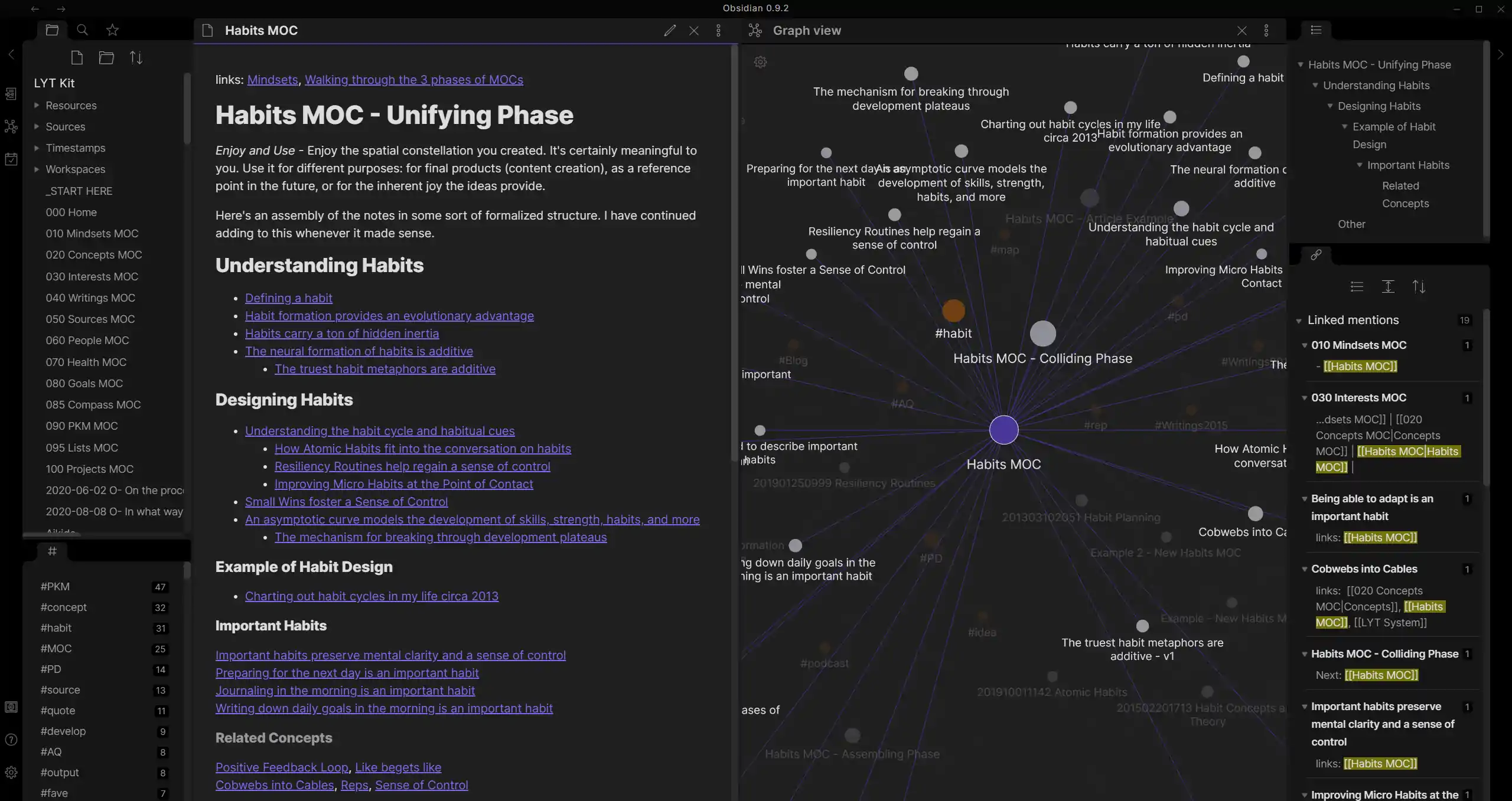Taking notes
Notes on notes on notes
2020-02-17 — 2023-09-18
Wherein various note-taking systems are surveyed and a plain-text blog workflow using VS Codium, Markdown Zettelkasten techniques, and considerations of syncing and end-to-end encryption are noted.
Org-mode, zettelkasten, plain text notebooks, means and philosophies of writing stuff down to aid thought.
1 Theory
Why take notes? Everyone cites How different is Vannevar Bush’s memex, which is a classic, although I am not totally convinced that his imagined way of thinking would be helpful for me personally, so much as an endless distraction. Nonetheless, the vague outline of the idea is powerful. Via Cheng Soon Ong, Mike Caulfield’s The Garden and the Stream: A Technopastoral contrasts the “cultivating a garden” feel of maintaining evolving notes with the contextless stream of social media reposts.
Jethro Kuan, How To Take Smart Notes With Org-mode:
The primary purpose of note-taking should not be for storing ideas, but for developing them. When we take notes, we should ask: “In what context do I want to see this note again?”
His blog post is an intro to the philosophy; you can bleep over the technical implementation details.
Note taking seems to be an easy method to yak shave, and there are a lot of notes online about how to make better notes.
2 Methodology
A popular one is the Zettelkasten system, (i.e. note box, but exotically written in German) which is a particular collection of habits for sorting notes into topics and serendipitously rediscovering them.
I would like to see empirical validation of the usefulness of particular techniques, (“I was 74% more creative while using Zettelkasten and achieved 12% more insight!” etc) but not so much that I will do a literature search right now.
See, e.g. abramdemski’s Zettelkasten diary, or the list of Digital Zettelkasten tools on the r/Zettelkasten/ wiki.
I am keen on tagged notes, but implementing that in a useful way for my combination notes-and-blog system does not seem to have happened. My own organically-evolved, slightly messy methodology does not have a name (It is precisely the blog you are reading now, which represents a compromise between ease of note-taking and ease of online publishing).
Methods not analysed here:
- taking notes on physical, paper cards. This is not portable enough for me, and too easy for me to lose. I have a bad track record with losable items.
- “Mind-mapping”, or any other tree-structured hierarchical assumption. That kind of single-parent taxonomy annoys me. I spend all my time worrying about taxonomy and no time doing things.
- flashcards for memorisation, which are covered at that link.
Maybe TBD:
- the intersection of note-taking and reading annotations, for diverse resources such as PDF articles and so on. Right now, annotating literature falls in the crack between note taking and reading workflows.
3 Tools
For me, my notebook is mostly this plain text blog, which I construct inside VS Codium. I auditioned a few alternative options before I settled on this. What follows is a messy collection of such note taking software options, from the perspective of my needs.
Advice from the Zettelkasten wiki:
Note that it is likely that the tool you use doesn’t really matter all that much. The original Zettelkasten was a huge stack of paper slips and even that worked great. There is one case where the choice of the tool has a huge impact, namely the case where the tool you use is discontinued. To avoid being left with a stack of 5000 notes that you can no longer access, prefer tools that export/save to common formats.
I also like tools that enable secure note taking, so that faceless corporations cannot read my drafts. This is trivial on the desktop, which has a bazillion ways of encrypting files. If you want to take notes also on the smartphone, then it needs support by a special app, which is where stuff starts getting awkward. Various solutions to this are mentioned below.
My personal solution is essentially to not use my phone for note taking.
3.1 Obsidian
Obsidian is wiki-like personal note-taking with pretty network visualisations of the pages.
The human brain is non-linear: we jump from idea to idea, all the time. Your second brain should work the same.
In Obsidian, making and following
[[connections]]is frictionless. Tend to your notes like a gardener; at the end of the day, sit back and marvel at your own knowledge graph.
Closed source, but with a good reputation for customer support and a rich plugin ecosystem (javascript, AFAICT). Works on all desktop platforms and mobile.
USD96/year for “syncing” which AFAICT is how I would enable mobile device access. Otherwise I would use git to sync content. USD96/year for “publish”
Worked example: From Hypothesis Annotation to Obsidian Note.
3.2 Logseq
Logseq: A privacy-first, open-source knowledge base (source)
Logseq is a knowledge management and collaboration platform. It focuses on privacy, longevity, and user control. Logseq offers a range of powerful tools for knowledge management, collaboration, PDF annotation, and task management with support for multiple file formats, including Markdown and Org-mode, and various features for organising and structuring your notes.
Logseq’s Whiteboard feature lets you organise your knowledge and ideas using a spatial canvas with shapes, drawings, website embeds, and connectors. You can visually group and link your notes and external media (such as videos and images), enabling visual thinkers to compose, remix, annotate, and connect content from their knowledge base and emerging thoughts in a new way.
In addition to its core features, Logseq has a growing ecosystem of plugins and themes that enable a wide range of workflows and customisation options. Mobile apps are also available, providing access to most of the features of the desktop application. Whether you’re a student, a professional, or anyone who values a clear and organised approach to managing your ideas and notes, Logseq is an excellent choice for anyone looking to improve their productivity and streamline their workflow.
Open source. It seems to be close to feature parity with Obsidian, and in fact you can use both to edit the same notes.
3.3 VS Code
Of course VS code fans made a note taking app many, many note taking apps for that text editor.
There are some listed below, distinguished by being documented well enough to be sure that they actually are note taking systems. More candidates pop up on a google search, each more ambiguous than the last.
3.3.1 Foam
Thanks to Dimitry in the comments, I add Foam. They reimplement some of the clever UX of roam but open-source, self-hosted and extensible. This looks closer to my jam.
Foam for VSCode (Wikilinks to Markdown). Awkwardly, I already invested too much in my blogdown-based blog here and the features that enable so I will not actually use Foam even though it looks cool.
3.3.2 VScode Markdown Notes
Don’t be fooled by its name, which is so unmemorable that I have already forgotten it, VScode Markdown Notes might be usable. Maybe your first note can be the name of this particular VS code extension so you can find it again?
Anyway the author has made a sensible design document with which I agree in every detail apart from the necessity of vim keybindings in this context, so I guess that is good?1
3.3.3 VS notes
Another one is called VS Notes. It seems rather… busy? With some extra configuration and strategic ignoring some of the fripperies it seems it might furnish an acceptable workflow. I suspect this is abandoned as of 2021.
3.4 Worldbrain Memex
Memex organises your web-research so you can utilize the power of your brain: thinking in associations.
- Full-Text Search your Web History & Bookmarks. Instantly recover anything you’ve seen before without doing any upfront work. Even if you just remember a single word, the time frame or the domain.
- Add Highlights and Notes on any Web Page. No more copy-pasting of important pieces and thoughts. Highlight, click, done. Keep your thoughts organised with their original context.
- Organise your Discoveries Fast and Flexibly. Tag and sort what you find online into full-text searchable collections.
- All data stored locally - offline first, Nobody has access to your data unless you share it with someone. Your data is not our business model.
- Open Source & here to stay. Copy. Modify. Innovate. Adapt Memex’ code and easily move your data to a version that suits your needs the best.
That looks fun. But it does not yet sync this vaunted database between browsers which makes it an awkward fit for my workflow spread across many computers. Ultimately I prefer to just keep things as markdown plaintext files, and do not actually need to store webpages. Although it might be handy, 90% of the time just searching through the browser history is fine, so I do not feel like the value add is worth the commitment.
3.5 anytype
Open source multi-platform encrypted note-taking app with some hype RN.
Anytype is a local-first, E2E encrypted software designed as a secure place to create and store digital assets.
You can use Anytype to create and connect your tasks, notes, ideas, documents, workflows, and more.
Future versions will allow you to share your work and safely collaborate with others. Our long-term vision is for Anytype to enable large-scale collaboration to create a global repository of interconnected knowledge.
Explore the documentation here to learn more about using the product, troubleshooting your account, and data privacy.
If you have more questions, check out our FAQ
For more vibes, check Anytype Review - How it Compares to Notion?.
NB: does not yet export to the web, which is my jam, clearly. It is not immediately clear how to do that, since in fact it is a database rather than a collection of files.
3.6 org-mode
🏗
A famous note-taking system for emacs nerds especially for TODO lists but it can be used as a Zettelkasten system apparently? Mentioned because it is a timeless classic in the community and you need to mention it, just like you need to mention the King James Bible when mentioning English literature.
I was surprised to learn that org mode does not need emacs. It turns out that org mode is essentially a file format convention, and we could notionally edit it using a variety of packages and plugins, or manually. C’mon now, though, will you really? I won’t.
Much note taking theory is based off the clever wiki-style linking, which is org-mode’s main selling point, in e.g the zettelkasten tutorial above.
3.7 Bear.app
Strictly using macOS/iOS? Maybe try Bear.app which is a pretty-lookin’ subscription service with clients for various apple products. AFAICT it is a glossier cousin of FSNotes. Optional encryption via your fingerprint, which is fine as far as you trust mandatory backdoors in your local jurisdiction presumably. USD15/year.
3.8 Roam research
A hyped, quirky, exclusive, web-nerd note taking app: Roam research seems to be a popular amongst people who would like to meta-optimise their hyperlearning with doubleplus buzzword-backed techniques.
It might be good? But I would not know. That workflow hype-cycle ship has now sailed for me, and I have no time for trying out alternatives at the moment. 😐 AFAICT its main selling points are that
- it has good UX for associative linking, and
- some higher-level analytics, and
- lots of 3rd party integrations
3.9 Clickup
ClickUp is popular amongst several of my friends who manage collective projects. It combines note-taking with to-do items, project management integrations and other stuff.
3.10 Zettlr
Zettlr seems to be similar to notational velocity but with certain academic writing features such as citation support in the form of zotero integration. Like notational velocity, it is desktop-only.
Zettlr has been developed with academic writing in mind. Therefore, it offers a lot of powerful tools to help you write academic texts right out of the box. …
3.11 Cosma
Cosma sounds like an interesting note visualisation tool.
Cosma is a document graph visualization tool. It renders interlinked plain text files as an interactive network in a web interface. It can be used to explore and share collections of various sizes, from a few dozen up to several thousands of documents.[…]
Among tools for thought, Cosma stands out with three key aspects:
First, Cosma is not a note-taking app. It is designed to work in conjunction with these programs. This is inspired by software such as Deckset, which applies this principle to presentations (write in your favourite editor, visualize elsewhere).
Secondly, Cosma is based on interoperable, open and standardised writing conventions. This allows you to use other tools that share these standards (such as Zettlr) and to switch tools more freely. Overall, it increases the durability of your data.
Finally, Cosma allows you to simultaneously share your data and the tools to explore it. What does this mean? Most visualization tools are packed with great functionality, but they only export static images, or structured data that requires software to make any use of. Cosma reverses this logic: what you see in the main window is actually a standalone HTML file, meaning you can share it and thus transmit not just your data, but a fully interactive representation of it.
Cosma does not require that you use any particular writing software. However, it only correctly interprets files that comply with the following rules:
- content is written in Markdown, file extension is
.md;- metadata is expressed in YAML, in a header at the beginning of the file;
- internal links are expressed with a wiki-like syntax (double brackets
[[ ]]) and based on unique identifiers.
3.12 Simplenote
Simplenote is an open-source and free note taker owned by the creators of WordPress, who provide both a sync server and client apps for pretty much every platform. It is not encrypted, so if they are subpoenaed or hacked, your notes will be disclosed. There does not appear to be a public API. It looks pretty and is probably usable.
3.13 Notational velocity
Notational Velocity / nvalt 2 — Text-oriented with search-based navigation. This is a classic system but seems to have become unfashionable for reasons that are opaque to me. Lack of mobile support? Patchy development record? It was iconic and many modern systems define themselves in reference to this revered ancestor.
Notational Velocity is an application that stores and retrieves notes.
It is an attempt to loosen the mental blockages to recording information and to scrape away the tartar of convention that handicaps its retrieval. The solution is by nature nonconformist.
Unique [sic] Characteristics
- Modeless Operation Searching for notes is not a separate action; rather, it is the primary interface.
- Incremental Search Searching encompasses all notes’ content and occurs instantly with each key pressed.
- Transparent Database Encryption All content is compressed and encrypted (enabled optionally) before it is recorded to disk.
- Mouseless Interaction Notational Velocity’s window was designed for keyboard input above all else, and thus has no buttons.
- Data Instead of Documents There is no manual “saving” in Notational Velocity; all modifications take effect immediately.
- Complete External Access Synchronize natively with Simplenote, or via files in Dropbox […]
Sounds more or less like the usual bullet points of Zettelkasten to me?
3.14 Joplin
Joplin is a cross-platform client for note-taking. Its clever feature is that it backloads end-to-end encrypted notes into a pre-existing sync service, NextCloud or Dropbox or Google Drive or whatever. Of course, you could do this with any note app which stores its content in a sync folder then use file sync encryption. However, then you could not edit it on your smartphone. Joplin is thus the only one using a generic file syncing service which is secure across all platforms. It even has full ability to import from Evernote. It supports proper text editors as a front end, which is cool.
3.15 Standard Notes
For a combination blogging tool and encrypted markdown note storage, you might want to use something like Standard Notes, which costs some money when you use the bells and whistles, although it might be worth it if your notes include confidential ones.
3.16 FSNotes
FSNotes is a macOS/iOS notes editor. The complete lack of polish on the name reveals much about both its aesthetic and functionality. Let me quote Andrew Kortina, the author of the even-less-artfully-named VScode Markdown Notes:
Of all the dedicated notes apps I tried, my favourite was
FSNotes. It self describes as:File System notes (FSNotes): is modern notational velocity (nvALT) on steroids.
It has a kind of ‘coder ethos’ which I like. Everything is stored in plaintext, you can use textbundle if you want, it is backed by a git repo so you have version history, it is open source, and there is a mobile app.
By default it will use iCloud to sync and is pretty reliable (but you could also use Dropbox or Google Drive to sync as it is filesystem based).
There’s no inline image support (uses a side preview instead) and no vim keybindings.
It supports mathematics, which is important for me. I sorta like the look of it, although I have non-Apple laptops and this kind of Apple-only system does not cut my mustard.
3.17 Turtl
Turtl is a notes syncing app. Promises host-proof encryption of “text, bookmark, password, image, and file/document”.
There is a supporting business offering hosting of their custom server in exchange for money, but it is open source. I would happily fork out money for this if they supported iOS. Has nifty features such as sharing content, rendering mathematical markup and permissions for users.
3.18 wiki.js
wiki.js is a feature-heavy node.js wiki engine that supports various workloads including multi-user wikis but also single-user note-taking. It has its own database but will also sync with text files in git. It seems over-engineered for me, supporting many features I do not need, but it is nice that it keeps the website front-and-centre, which is important for me.
3.19 The Archive
Zettelkasten-focused Mac app (AUD32) that does lots of elegance branding. Stores files in plain text.
3.20 Evernote
Commercial notes app whose workflow I did not really enjoy, nor the needy upselling, so I deleted it. AFAICT they were not convincingly confidential and had no features that I needed that I could not get elsewhere for cheaper and with superior security.
3.21 Treesheets
treesheets is an open-source data GUI which as a hierarchical freeform database might be good for note-taking? Not my style, though.
4 Incoming
Oleksandr Nikitin is working on The Cortex, their Ultimate Productivity App Thing
Personal Knowledge (Note-Taking) Systems - Self Improvement Inputs - The Commonplace Community
Gordon Brander, Thinking together, on egregores, Dunbar numbers and information-processing thresholds in Holocene social evolution, all to motivate a decnet system that looks a lot like notes:
- Noosphere, a protocol for thought
- source
- The explainer is bad and does not even tell us how to start up one of these noospheres or do anything in particular, which indicates a suspect development model
Footnotes
I do like vim keybindings; they are not a showstopper for me is all.↩︎



